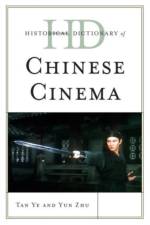von Emer O'Sullivan
170,00 €
Childrens literature comes from a number of different sources-folklore (folk- and fairy tales), books originally for adults and subsequently adapted for children, and material authored specifically for them-and its audience ranges from infants through middle graders to young adults (readers from about 12 to 18 years old). Its forms include picturebooks, pop-up books, anthologies, novels, merchandising tie-ins, novelizations, and multimedia texts, and its genres include adventure stories, drama, science fiction, poetry, and information books. The Historical Dictionary of Childrens Literature relates the history of childrens literature through a chronology, an introductory essay, appendixes, a bibliography, and over 500 cross-referenced dictionary entries on authors, books, and genres. Some of the most legendary names in all of literature are covered in this important reference, including Hans Christian Anderson, L. Frank Baum, Lewis Carroll, Roald Dahl, Charles Dickens, C.S. Lewis, Beatrix Potter, J.K. Rowling, Robert Louis Stevenson, Mark Twain, J.R.R. Tolkien, Jules Verne, and E.B. White.






























